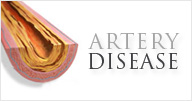
Introduction
Coronary Artery Disease (CAD) is usually caused from a condition called atherosclerosis. Atherosclerosis is a condition in which fatty material is deposited along the walls of arteries. This fatty material (often called plaque) thickens, hardens, and may eventually block the arteries.
When atherosclerosis occurs within the coronary arteries, the condition is referred to as Coronary Artery Disease, or CAD.
Symptoms of CAD include chest pain (angina), shortness of breath, and, if left untreated, heart attack.
CAD is the most common cause of angina and Heart Attack.
Risk factors for Coronary Artery Disease include the following:
Family history-
Hypertension (High Blood Pressure)-
High Cholesterol or other fat levels in blood-
Inactive lifestyle- Obesity/ overweight/ lack of exercise-
Diabetes (High blood sugar)-
Cigarette Smoking-
Stress-
Menopause-
Non-compliance with medicines to treat hypertension and high cholestero-l
Coronary Heart Disease is the most common cause of Angina and Heart Attack.
Symptoms
Chest pain is the most common complaint in heart attack. Unlike angina, pain does not subside on resting.
However, the symptoms may be different.
For example,
Fullness, uncomfortable pressure, squeeze in the middle of the chest-
Tightness, burning or a heavy weight over your chest-
Pain may radiate to your shoulders, neck, arms, upper abdomen, back or jaw 20% of the patients with heart attack have no pain. This is seen in diabetics, high blood pressure, and elderly patients.
Heart attack is a medical emergency and if you suspect symptoms of heart attack, you should call for an ambulance or seek immediate medical help.
Diagnoses
A Cardiologist should evaluate all heart conditions for proper diagnosis and treatment.
Your Cardiologist will perform the following:
Medical History-
Physical Examination
Diagnostic Studies may include:
Blood tests
Routine blood tests may be done for blood counts, electrolytes, cholesterol and cardiac enzymes. The cardiac enzymes in blood are markers of heart damage.
(EKG or ECG) Electrocardiogram
EKG is a test to measure the electrical activity of the heart and provides your doctor with information about your heart rate, rhythm, size of the heart chambers and previous damage to the heart. It is non-invasive and painless and is performed by attaching electrodes to various parts of the body.
Nuclear heart scans
This test shows blood flow to the heart, any damage to the heart muscle, and how well your heart pumps blood to the rest of your body. A radioactive dye is injected into your bloodstream. A special camera can see the dye and find areas where blood flow is reduced to the heart muscle, which may indicate the presence of CAD Angiography (Also called Angiogram or Cardiac Catheterization).
Angiography is a test that enables your doctor to take x-ray images of the inside of your blood vessels. This procedure is performed by a cardiologist and involves threading a tiny catheter through a small incision into a large artery, usually in your groin. Once the catheter reaches the site of the blood vessel to be viewed, a dye is injected and x-ray images are taken. Angiography enables your doctor to view how blood circulates in the vessels in specific areas of the body. An angiogram is the only test that shows the blood vessels of the heart.
Management of Coronary Artery Disease includes:
Lifestyle Modifications-
Medications
Lifestyle Modifications
Healthy life choices will improve your overall health and your heart health and can help you slow the progression of your heart disease.
Some heart healthy choices include:
Healthy Diet Choices
Eating a low fat, low salt, low cholesterol diet.
Don't Smoke
If you do smoke, talk to your doctor about available options to help you quit. You will immediately lower your risk of heart disease as soon as you quit.
Exercise
Increasing your physical activity is a great way to reduce stress, improve sleep, lose weight, and improve your overall sense of well-being. Always discuss with your doctor before beginning any new exercise program.
Weight Loss
Being overweight puts extra strain on your heart. Discuss weight loss options with your doctor and follow his advice.
Diabetes Control
Take your diabetic medications, check with your doctor for exercises and physical activity as well as nutrition advice.
Medications
Along with life style modification, medications may be needed to control symptoms and improve the heart health. More than one medication may be prescribed. Some common medications are listed on the left. Move your cursor over the medications to find out more.
Anticoagulants or Thrombolytic agents
These blood thinning medicines are given during a heart attack to break up a blood clot in a coronary artery in order to restore blood flow.
Aspirin
Aspirin reduces the tendency of small blood cells called platelets to stick together, which helps prevent the formation of a blood clot (thrombosis).
Nitroglycerin (NTG)
This quick acting sublingual tablet or spray relax the arteries of the heart and relieve angina attacks. Sublingual means it is administered under the tongue for quick absorption and action.
Digitalis
Digitalis makes the heart contract harder and is used when the heart's pumping function has been weakened; it also slows some fast heart rhythms.
ACE (angiotensin converting enzyme) inhibitor
Ace Inhibitors stops the production of a chemical that makes blood vessels narrow and is used to help control high blood pressure and in cases of heart failure.
Long-acting nitrates
Long-acting nitrates reduce the frequency of angina attacks. These can be in the form of tablets or patches and are very effective. Their main side effect is headache, but this often disappears once the nitrate has been taken for some weeks.
Beta-blockers
Beta-blockers work by slowing down the heart rate and decreasing the force of the heart muscle. This reduces the heart's need for oxygen and improves the supply of blood to the heart muscle.
Calcium Channel Blockers
Calcium Channel Blockers reduce the frequency and severity of chest pain. They reduce the muscle tension in the coronary arteries, expanding them and creating more room. They also slightly relax the heart muscle, reducing the heart's need for oxygen and reducing blood pressure.

